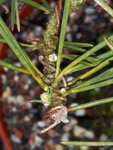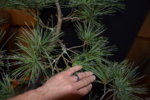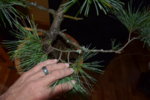Here’s a few:

JBP will backbud at old candle bases. They can also backbud between needles, but I usually don’t have to worry about those as I get plenty from the old bud junctions.
The key to making this happen is to keep your internodes short. Wiring branches out so the old junctions are exposed to the sun, thinning out old foliage so the junctions get direct sunlight, and strong root growth.

JBP will backbud at old candle bases. They can also backbud between needles, but I usually don’t have to worry about those as I get plenty from the old bud junctions.
The key to making this happen is to keep your internodes short. Wiring branches out so the old junctions are exposed to the sun, thinning out old foliage so the junctions get direct sunlight, and strong root growth.







